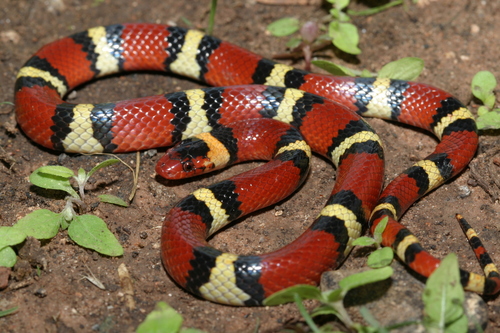
Scarlet Kingsnake
The Scarlet Kingsnake dazzles with its vibrant red, black, and yellow bands, expertly mimicking the venomous coral snake. This non-venomous marvel thrives in southeastern U.S. habitats, playing a vital role in controlling rodent populations. Its mimicry is a captivating example of nature's survival strategies.
21 years
Lifespan
Length: 46 - 76 cm
Size
Yellow, Red, Black, White
Color
Least Concern
Conservation Status
Stable
Population Trend
Characteristics
Lampropeltis elapsoides, commonly known as the Scarlet Kingsnake, is a non-venomous species native to the southeastern United States. It thrives in a variety of habitats, from pine forests to marshlands. The Scarlet Kingsnake is renowned for its striking mimicry of the venomous coral snake, with vibrant red, black, and yellow banding.
Distribution Range of the Scarlet Kingsnake
Lampropeltis elapsoides, commonly known as the Scarlet Kingsnake, is native to the southeastern United States. Its geographical distribution includes parts of Florida, Georgia, South Carolina, North Carolina, Alabama, Mississippi, and Louisiana. This species is found in both coastal and inland areas within these states.
Scarlet Kingsnake's Habitat
Environmental Conditions
The Scarlet Kingsnake typically inhabits forested areas, particularly pine forests, as well as hardwood hammocks and grasslands. It prefers environments with abundant ground cover, such as leaf litter or fallen logs, which provide shelter and hunting grounds. The climate in its native range is generally warm and humid, with mild winters and hot summers.
Ecological Niche
Lampropeltis elapsoides occupies an ecological niche as a mid-level predator. It primarily preys on small rodents, lizards, and other snakes, including venomous species. This kingsnake is known for its mimicry of the venomous coral snake, which provides it with protection from predators. It is an important species in controlling the populations of its prey, contributing to the ecological balance within its habitat.
Copyright @ Nature Style Limited. All Rights Reserved.
 English
English